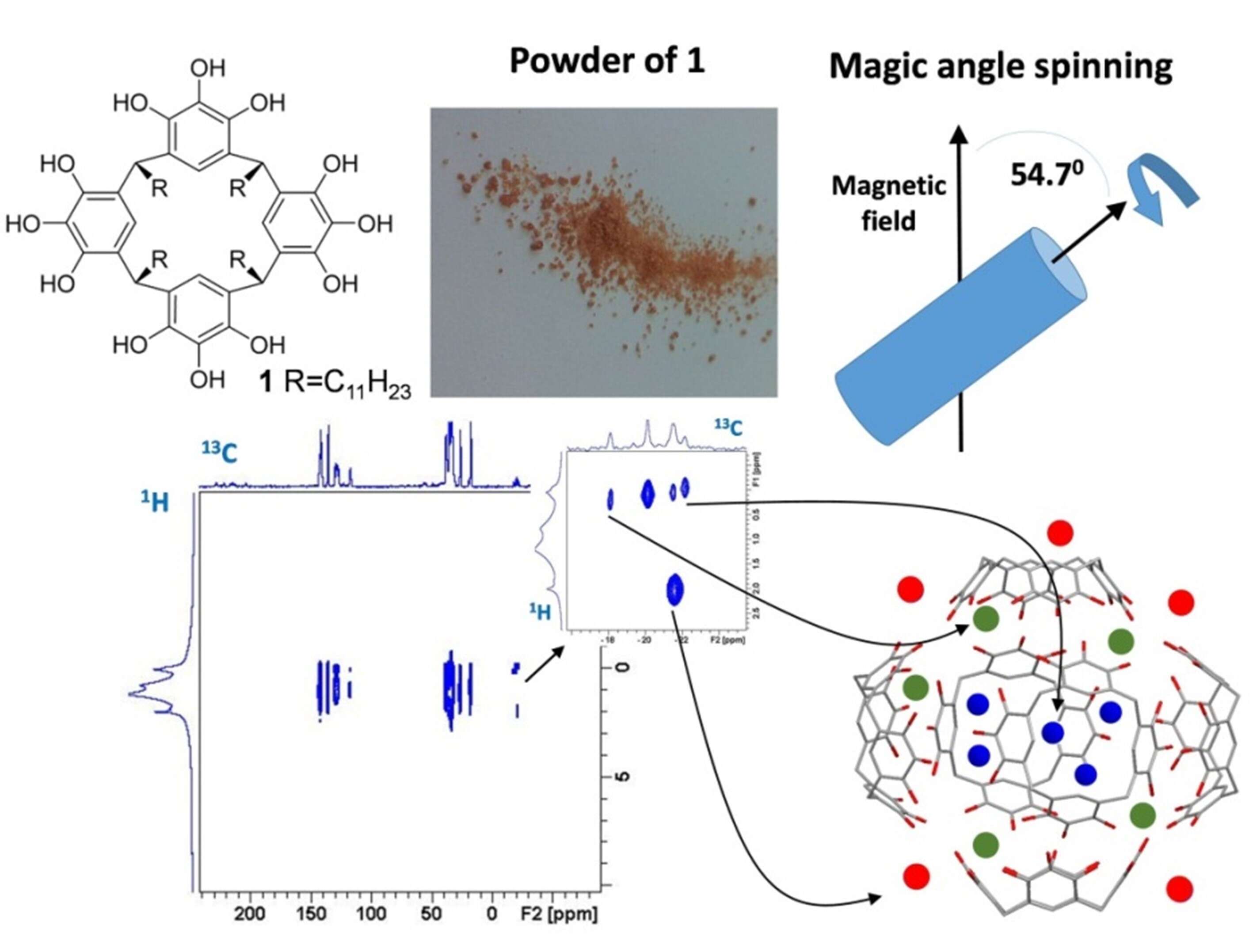
HEXAMERIC CAPSULES OF PYROGALLOL[4]ARENE STUDIED BY MAGIC ANGLE SPINNING SOLID STATE NMR
Self-assembled molecular capsules of resorcin[4]arenes and pyrogallol[4]arenes have been studied extensively in the last decades mostly in the solid-state by x-ray crystallography and in solution by NMR and by diffusion NMR. However, these spectroscopic methods afforded only limited information on the encapsulated molecules. In many X-ray studies of pyrogallol[4]arene hexamers almost no information was obtained on the encapsulated solvent molecules. Therefore we have used magic angle spinning solid state NMR (MAS ssNMR) to study, for the first time, the systems formed by slow evaporation of organic solutions of 1. We show that evaporation allows to selectively remove the non-encapsulated solvent molecules affording stable hexameric capsules with encapsulated solvent molecules. By re-exposing the powder to solvent vapors and resorting to 1H/13C heteronuclear correlation MAS NMR experiments we could assign the external and encapsulated solvent peaks. The combination of several MAS ssNMR techniques enabled us to show that the encapsulated molecules occupy several different sites within the capsules, to demonstrate that the formed capsules are stable for months and that the process of solvent encapsulation is reversible. Using different 13C MAS ssNMR experiments we also showed that the different encapsulated molecules within the hexameric capsules have different mobilities on the NMR timescale. The presented approach paves the way for studying guests exchange, guests affinity and gas storage in such systems in the solid state.

Powered by Eventact EMS